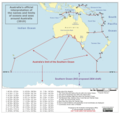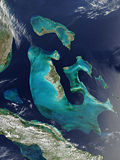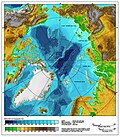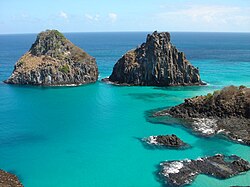Jesse Ventura
The Oceans Portal
A portal dedicated to oceans, seas, oceanography and related topics
– Hover over image and scroll to middle for controls to see more selected panorama images –
Introduction
| Earth's ocean |
|---|
|
Main five oceans division: Further subdivision: Marginal seas |

The ocean is the body of salt water that covers approximately 70.8% of Earth. The ocean is conventionally divided into large bodies of water, which are also referred to as oceans (the Pacific, Atlantic, Indian, Antarctic/Southern, and Arctic Ocean), and are themselves mostly divided into seas, gulfs and subsequent bodies of water. The ocean contains 97% of Earth's water and is the primary component of Earth's hydrosphere, acting as a huge reservoir of heat for Earth's energy budget, as well as for its carbon cycle and water cycle, forming the basis for climate and weather patterns worldwide. The ocean is essential to life on Earth, harbouring most of Earth's animals and protist life, originating photosynthesis and therefore Earth's atmospheric oxygen, still supplying half of it. (Full article...)

A sea is a large body of salt water. There are particular seas and the sea. The sea commonly refers to the ocean, the interconnected body of seawaters that spans most of Earth. Particular seas are either marginal seas, second-order sections of the oceanic sea (e.g. the Mediterranean Sea), or certain large, nearly landlocked bodies of water. (Full article...)
Oceanography (from Ancient Greek ὠκεανός (ōkeanós) 'ocean' and γραφή (graphḗ) 'writing'), also known as oceanology, sea science, ocean science, and marine science, is the scientific study of the ocean, including its physics, chemistry, biology, and geology. (Full article...)
Selected article -
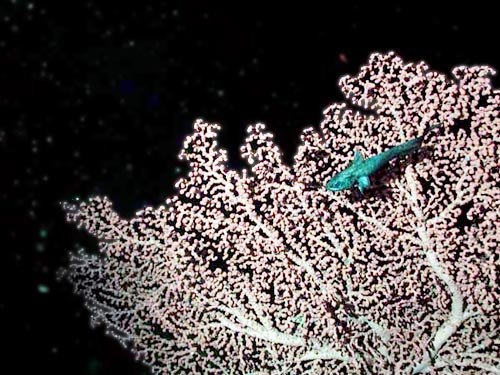
The habitat of deep-water corals, also known as cold-water corals, extends to deeper, darker parts of the oceans than tropical corals, ranging from near the surface to the abyss, beyond 2,000 metres (6,600 ft) where water temperatures may be as cold as 4 °C (39 °F). Deep-water corals belong to the Phylum Cnidaria and are most often stony corals, but also include black and thorny corals and soft corals including the Gorgonians (sea fans). Like tropical corals, they provide habitat to other species, but deep-water corals do not require zooxanthellae to survive.
While there are nearly as many species of deep-water corals as shallow-water species, only a few deep-water species develop traditional reefs. Instead, they form aggregations called patches, banks, bioherms, massifs, thickets or groves. These aggregations are often referred to as "reefs," but differ structurally and functionally. Deep sea reefs are sometimes referred to as "mounds," which more accurately describes the large calcium carbonate skeleton that is left behind as a reef grows and corals below die off, rather than the living habitat and refuge that deep sea corals provide for fish and invertebrates. Mounds may or may not contain living deep sea reefs. (Full article...)
Interesting facts -
- The deep-sea coral species Gersemia juliepackardae was named for Julie Packard (pictured), executive director of Monterey Bay Aquarium, for her work as an ocean conservationist.
- Chinese politician Liu Cigui worked as a rusticated youth and studied oceanography.
- Female seaweed blennies deposit their eggs in a shared nest where the male fish guards them until they hatch.
Selected list articles and Marine habitat topics
| Marine habitats |
|---|
| Coastal habitats |
| Ocean surface |
| Open ocean |
| Sea floor |
- List of oceans
- List of ancient oceans
- List of seas
- List of circumnavigations
- List of cruise lines
- List of largest lakes and seas in the Solar System
- List of marine biologists
- List of marine ecoregions
- List of maritime explorers
- List of naval battles
- List of ocean liners
- List of oceanographic institutions and programs
- List of oldest surviving ships
- List of rogue waves
- List of seafood dishes
- List of submarine topographical features
Tasks
 |
Here are some tasks awaiting attention:
|
General images -
Related portals
In the news
- 5 June 2025 – Mediterranean Sea migrant smuggling, Sudanese refugee crisis
- The Freedom Flotilla, a flotilla carrying humanitarian aid en route to Gaza with Swedish activist Greta Thunberg, Irish actor Liam Cunningham, and French European Parliament member Rima Hassan, rescue four Sudanese civil war refugees from a dinghy near Libya. (The Times of Israel) (The Print)
- 28 May 2025 – Red Sea crisis
- Israel says it launched airstrikes against targets in Houthi-controlled Yemen, destroying the last operational plane of Yemenia Airlines at Sanaa International Airport. (Reuters)
- 16 May 2025 – Red Sea crisis
- The Israeli Air Force launches airstrikes on the ports of Hudaydah and Salif in Houthi-controlled Yemen, as prime minister Benjamin Netanyahu and defense minister Israel Katz warn that if the Houthis persist in attacking Israel, their leader Abdul-Malik al-Houthi will be directly targeted. (Al Arabiya)
- 11 May 2025 – Mediterranean Sea migrant smuggling
- Three people are found dead, including two children, on a dinghy crossing the Mediterranean Sea from Libya to Italy. German NGO RESQSHIP intercepts the boat and brings the remaining 59 survivors to Lampedusa. (DW)
- 10 May 2025 – Soviet space program
- Kosmos 482, a failed Venus probe launched by the Soviet Union in 1972, re-enters Earth's atmosphere, splashing down in the Indian Ocean west of Indonesia, according to Roscosmos. (The Guardian) (CNN)
WikiProjects
Topics
Categories
Associated Wikimedia
The following Wikimedia Foundation sister projects provide more on this subject:
-
 Commons
Commons
Free media repository -
 Wikibooks
Wikibooks
Free textbooks and manuals -
 Wikidata
Wikidata
Free knowledge base -
 Wikinews
Wikinews
Free-content news -
 Wikiquote
Wikiquote
Collection of quotations -
 Wikisource
Wikisource
Free-content library -
 Wikiversity
Wikiversity
Free learning tools -
 Wiktionary
Wiktionary
Dictionary and thesaurus
Admiralty law
| Admiralty and maritime law |
|---|
| History |
| Features |
| Contract of carriage / charterparty |
| Parties |
| Judiciaries |
| International organizations |
| International conventions |
|
| International Codes |
Need assistance?

Do you have a question about oceans, seas or oceanography that you can't find the answer to? Consider asking it at the Wikipedia reference desk.
External media

- World Ocean Database and World Ocean Atlas Series – from the U.S. National Centers for Environmental Information, National Oceanic and Atmospheric Administration. Includes the World Ocean Atlas.
- European Atlas of the Seas – the European Atlas of the Seas, from the European Commission
- NOAA Research – NOAA research news, Oceanic and Atmospheric Research (OAR)
- Ocean Research – from The World Ocean Observatory
- Ocean Biodiversity Information System – "a global open-access data and information clearing-house on marine biodiversity for science, conservation and sustainable development"
-

-

-

-

-
Random portal

 Read
Read
 AUTHORPÆDIA is hosted by Authorpædia Foundation, Inc. a U.S. non-profit organization.
AUTHORPÆDIA is hosted by Authorpædia Foundation, Inc. a U.S. non-profit organization.




















![Image 10An exclusive economic zone (EEZ) map of the Pacific which excludes non-tropical islands.[why?] (from Pacific Ocean)](https://upload.wikimedia.org/wikipedia/commons/thumb/b/bc/Map_of_the_Exclusive_Economic_Zones_of_the_Pacific_Ocean.png/120px-Map_of_the_Exclusive_Economic_Zones_of_the_Pacific_Ocean.png)







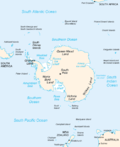





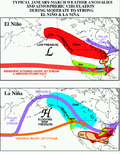





















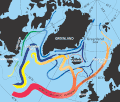




















![Image 67"Terres Australes" [sic] label without any charted landmass (from Southern Ocean)](https://upload.wikimedia.org/wikipedia/commons/thumb/8/8e/Geography_world_map.jpeg/120px-Geography_world_map.jpeg)



